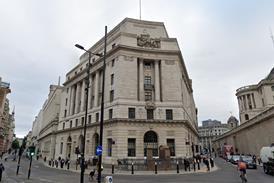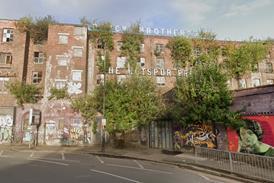- Home
 Full cost of HS2 work around Moxon’s bat tunnel will be £168m, says DfT
Full cost of HS2 work around Moxon’s bat tunnel will be £168m, says DfT Ryder tables plans to transform grade II-listed office on Bank Junction into budget hotel
Ryder tables plans to transform grade II-listed office on Bank Junction into budget hotel Hundreds of signatures for petition to rebuild Manchester’s Hotspur Press after fire
Hundreds of signatures for petition to rebuild Manchester’s Hotspur Press after fire Universal submits planning application for Bedfordshire theme park set to be Europe’s largest
Universal submits planning application for Bedfordshire theme park set to be Europe’s largest
- Intelligence for Architects
- Subscribe
- Jobs
- Events

2025 events calendar Explore now 
Keep up to date
Find out more
- Programmes
- CPD
- More from navigation items
BDP’s £500m Northern Estate programme shut down

Decision comes amid radical changes to the £4bn revamp of parliament, such as accessing Westminster from the river
The £500 million Northern Estate programme has been scrapped, placing AHMM’s plans to convert Richmond House into a pop-up parliament in jeopardy, Building Design can reveal.
Confirmation of the decision was made in a letter from Sarah Johnson, chief executive of the Restoration and Renewal Sponsor Body, and David Goldstone, chief executive of the Delivery Authority, to Meg Hillier, chair of the Public Accounts Committee.
The letter, published yesterday after a request by Building Design but written last week, states: “In relation to the Northern Estate Programme, Mr Speaker wrote to Liz Peace [chair of the Restoration and Renewal Sponsor Body] on 16 November 2020. The letter informed the R&R Programme of the closure of the Northern Estate Programme, in favour of a new approach of having a more agile set of projects.”
…
This content is available to registered users | Already registered?Login here
You are not currently logged in.
To continue reading this story, sign up for free guest access
Existing Subscriber? LOGIN
REGISTER for free access on selected stories and sign up for email alerts. You get:
- Up to the minute architecture news from around the UK
- Breaking, daily and weekly e-newsletters
Subscribe to Building Design and you will benefit from:

- Unlimited news
- Reviews of the latest buildings from all corners of the world
- Technical studies
- Full access to all our online archives
- PLUS you will receive a digital copy of WA100 worth over £45
Subscribe now for unlimited access.


